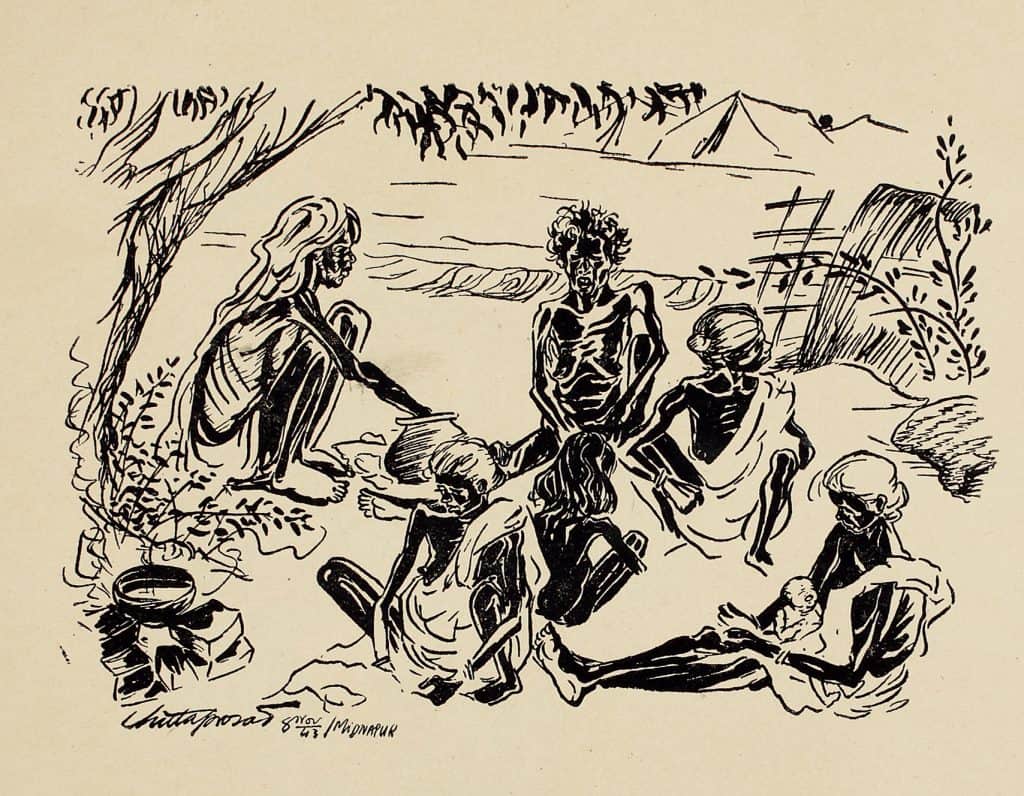Saptarshi Ghosh
The year was 1943. The Indian freedom struggle had intensified following Mahatma Gandhi’s launch of the Quit India Movement the previous year. It is at this crucial moment that the state of Bengal was hit by one of the worst famines in the history of modern India. Around three million people lost their lives from starvation, malnutrition and disease. What makes it worse is that this was not a natural famine by any means.
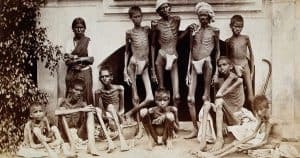
Courtesy: Wikimedia Commons
The Second World War was at its peak during this time. The British administration, anticipating a Japanese invasion, ordered stockpiling of food reserves to feed its army and even had them exported to its soldiers in the Middle East. It is estimated that the British exported more than 70,000 tonnes of rice between January and July 1943, even when the famine had already set in. Such actions spread uncertainty and fear among the masses, who soon resorted to hoarding food resources.
Amartya Sen, the Nobel-winning economist, has argued in his work Poverty and Famines that it was only the people belonging to disadvantaged sections of society who suffered from starvation. Owing to sky high prices, they could not purchase food for their subsistence.
The entire societal fabric broke down in the wake of the devastating famine. Eye-witness accounts narrate how families got separated, dependents were abandoned, children were sold and women, out of desperation, took recourse to prostitution. The air was filled with cries for help and the streets were littered with bodies.
When outrageous crimes are committed against humanity, it falls upon the artist to faithfully document the horrors so that they don’t get erased from pages of history. Chittoprasad, Somnath Hore and Zainul Abedin were three artists who created powerful works of social realist art, capturing the suffering and despair of the people affected by the famine.
Chittoprasad Bhattacharya
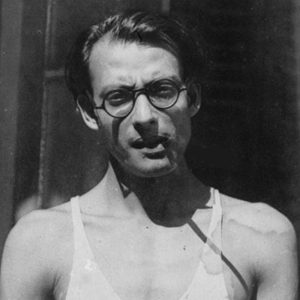
Courtesy: JNAF
Chittoprasad Bhattacharya was a Bengali artist and political activist, working for the Communist Party of India. In 1943, he was sent to the district of Midnapore to document the ravages of the famine. His travels through the affected areas resulted in a first-hand account of the catastrophe, combining journalistic observations and sketches in black and white. Titled Hungry Bengal, nearly 5,000 copies of the book were destroyed by the British government, in an attempt to suppress the truth.
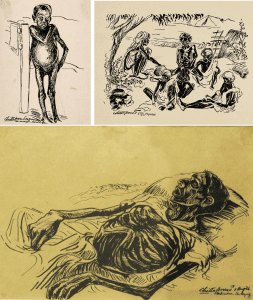
Chittoprasad’s work was characterized by its stark realism and emotional intensity. His sketches depicted emaciated figures with sunken eyes and hollow cheeks, struggling to survive in a landscape of death and despair. One wonders how Chittoprasad could manage to pull out his sketchbook and record his observations during his exhausting journeys on foot from one village to the other. The swiftness of his strokes indicate that he did not spend a lot of time on making them. He would also take down detailed notes on his subjects and locations, thus investing his subjects with individuality. To him, they weren’t just nameless victims. In one record, for example, he writes:
“This is hungry, disease-ridden, and virtually naked Rabi Raut, a kisan boy of Kadamdanga village, Balagor, Hooghly district. He has 3 younger brothers and a sister, all bed-ridden through protozoal infection, scabies, and cough […].”
Somnath Hore
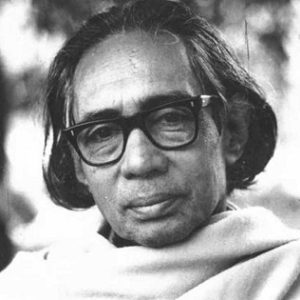
Courtesy: Wikimedia
Somnath Hore was another Bengali artist who, along with Chittoprasad, recorded the horrors of the Bengal famine. Hore’s powerful sketches, which were published in the Communist Party magazine Jannayuddha, depicted the suffering of the people of Bengal in stark detail, showing starving figures with sunken eyes and bony limbs. Hore’s work was particularly effective at conveying the sense of despair and hopelessness that permeated the affected areas. His prints were widely circulated throughout Bengal and became an important tool in raising awareness of the famine and its devastating effects.
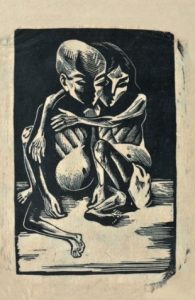
Courtesy: Seagull Foundation for the Arts
Zainul Abedin
When the famine hit, Zainul Abedin, an established painter in the academic realist mode, was working as a teacher in the Government School of Art, Calcutta. While Chittoprasad and Hore captured the plight of people from the famine-hit rural regions, Abedin was a chronicler of the urban scene. Calcutta witnessed a massive influx of destitute, starving people in the wake of the famine, which radically altered the urban landscape, colouring it with death and despair.
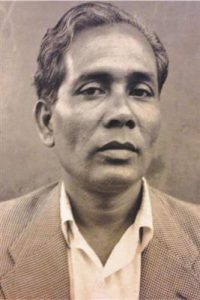
Courtesy: WikiArts
Even Abedin adopted the black ink and a rudimentary style similar to Chittoprasad’s. Foregoing any tonal modulations and softness, Abedin’s visual language was characterised by a starkness that appropriately conveyed the bleakness of the situation. In his works, dogs and crows are seen pecking at dead bodies or surrounding a group of children, as they empty their last morsel of food. Abedin captured disturbing scenes, underlining the inhumane conditions people were subjected to.
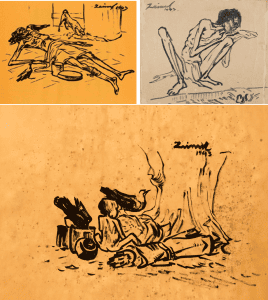
The social realist art of Chittoprasad, Somnath Hore and Zainul Abedin on the Bengal famine of 1943 was a powerful response to one of the greatest humanitarian disasters of the 20th century. For them, art was an effective tool of resistance to rebel against the inhumane policies of the British government. Today, their work serves as a powerful reminder of the resilience of the human spirit in the face of unimaginable suffering and adversity.
Bibliography:
- Sanjoy Malik, “Social Realism in the Visual Arts: ‘Man-made’ Famine and Political Ferment, Bengal 1943-46,” in Art and Visual Culture in India (1857-2007), edited by Gayatri Sinha (New Delhi: Marg Publications, 2009).
- Sanjukta Sunderason, Partisan Aesthetics: Modern Art and India’s Long Decolonization (California: Stanford University Press, 2020).
- https://indigenousweb.com/blog/chittaprosad-bhattacharya-political-art/
- https://www.britannica.com/topic/Bengal-famine-of-1943

